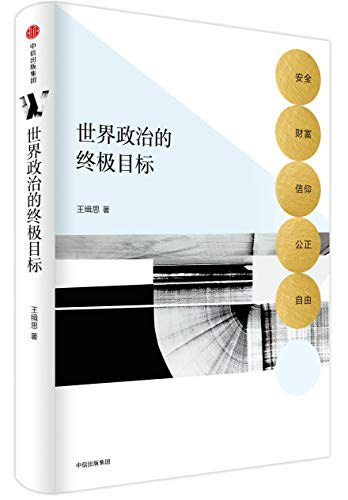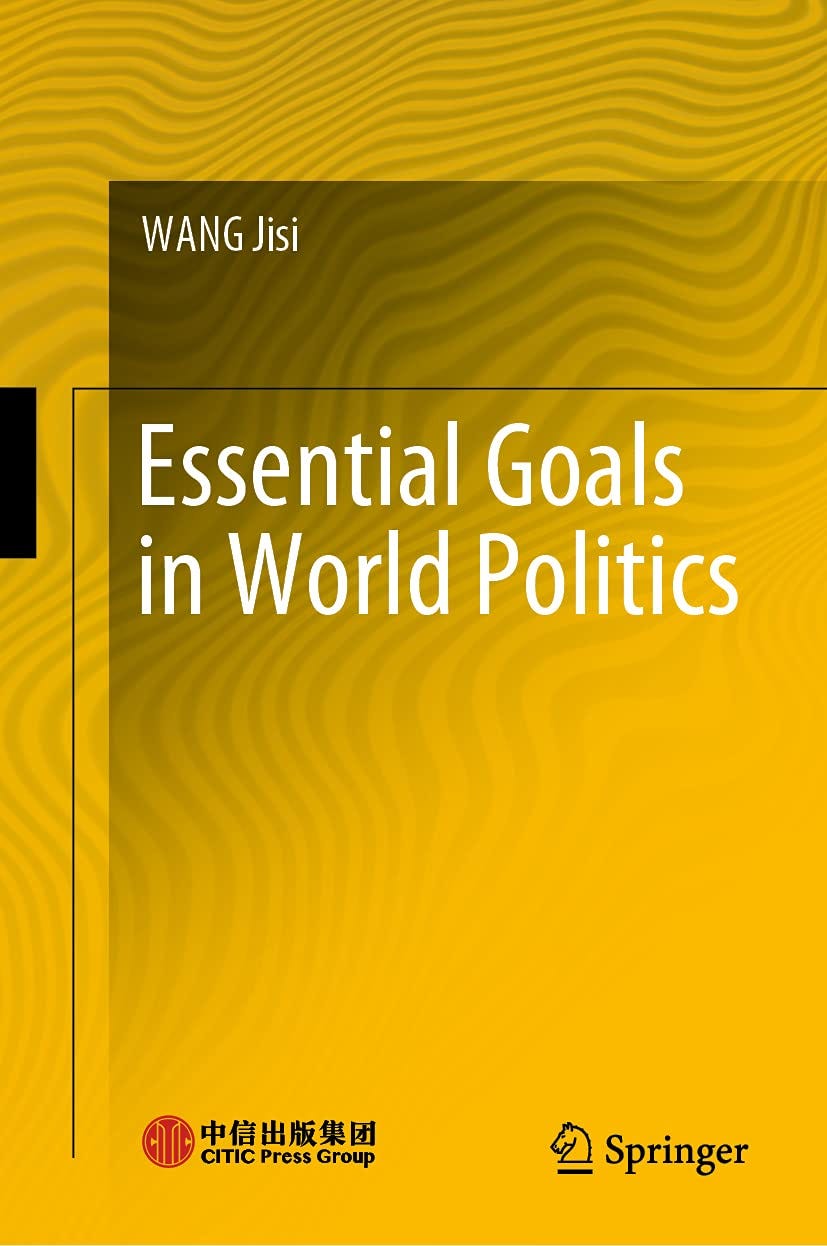Wang Jisi on The Relationship Between National Security and Other National Objectives
National security must have its boundaries, says the top Chinese IR scholar.
We are sharing a recently published article by Wang Jisi today. Wang is Boya Chair Professor, Founding President of the Institute of International and Strategic Studies, and Distinguished Expert at the Institute for Global Cooperation and Understanding, Peking University.
In a PKU conference on China’s “holistic approach to national security,” the top Chinese international relations expert highlighted that while national security is essential to every sovereign state, so, too, are wealth, belief, justice, and freedom. The task, he argues, is to recognize where security ends and other national aims begin, lest the endless appetite for security devour the very wealth and freedom it claims to protect.
This article, based on Wang’s speech on April 23, 2022, was first published in China International Strategy Review (Volume 20), March 2025 edition, a journal run by the Institute of International and Strategic Studies at PKU, and published by World Affairs Press.
It is also available on the official WeChat blog of the Institute for Global Cooperation and Understanding at PKU.
The following translation hasn’t been reviewed by Wang.
王缉思:国家安全与国家其他目标的关系
Wang Jisi: The Relationship Between National Security and Other National Objectives
National security constitutes the foundation upon which a state survives and develops. However, aside from security, a nation also pursues several other important objectives. A few years ago, in my book The Ultimate Goals of World Politics [English], I outlined five ultimate goals that are commonly pursued by states around the world: security, wealth, belief, justice, and freedom. These five goals can, and should, reinforce one another. Yet in political practice, they may at times come into conflict, leading to trade-offs and contradictions.
What I would like to address first is the relationship between national security and economic growth, which closely resembles the relationship between “peace and development.” General Secretary Xi Jinping has emphasised that, to pursue a holistic approach to national security, China must “pay attention to both development and security. Development is the foundation of safety, while safety is a precondition of development. Only a prosperous country can have a strong military, which in turn can protect the country.”
Conversely, it is easy to observe the correlation between poverty and violence. The destitute, having nothing to lose, are more likely to resort to violence as a form of protest against social injustice and as a means of seizing wealth from others. Therefore, in order to reduce the occurrence of violence and enhance domestic security, it is necessary to develop the economy and alleviate poverty. American political scientist Samuel P. Huntington observed that political stability is more often found in relatively affluent societies. However, he also cautioned against assuming a deterministic link between poverty and disorder and the association is merely a superficial explanation. In reality, when impoverished states embark on the path to prosperity and modernisation, excessive speed in this process may increase the likelihood of violence and upheaval.
Studies suggest that the link between economic growth and political unrest depends on a country’s level of development. In advanced economies, faster growth tends to enhance political stability. In contrast, in less developed countries, rapid growth can heighten the risk of unrest. This is largely because poorer nations typically suffer from greater inequality in wealth and income distribution. During economic booms, initial gains from growth typically favour the privileged elites, who also tend to dominate the government, an institution meant to serve as a societal counterbalance. As a result, income distribution tilts even further in favour of the rich, deepening inequality. As resentment builds among the broader population, if oppositional forces—be they political parties, activist organisations, or foreign actors—successfully mobilise discontent, unrest is likely to erupt.
That violence hinders economic development while security promotes the accumulation of wealth is self-evident. Countries that enjoy peace can succeed in lifting themselves out of poverty, whereas poverty is concentrated in those nations torn apart by civil wars, ethnic conflict, and organised crime.
On the other hand, the goals of security and wealth may also come into conflict. The primitive accumulation of capital in Western modernisation was marked by violent exploitation, border disputes, and wars. Prior to World War II, Japan and Germany stood as the strongest nations in Asia and Europe, respectively. Japan’s heavy industries—particularly its automobile and shipbuilding sectors—had already matched Western advanced standards. From 1933 to 1939, Germany’s gross national product more than doubled. In just six years, Germany surpassed both the United Kingdom and France to become the leading power in Europe. However, this rapid accumulation of wealth also fueled the expansionist ambitions of Japan and Germany. Each launched wars of aggression in Asia and Europe, and ultimately suffered defeat.
Wealth is limited, while security demands are limitless. The classic “guns versus butter” trade-off of how much of a nation’s wealth should be allocated to security and stability remains an inescapable concern for every sovereign country.
The relationship between Russia’s defence spending and its economic development is also a topic worth examining. During the Cold War, the Soviet Union engaged in a prolonged arms race with the United States, consuming vast national wealth. One controversial view holds that Russia’s expansive territory, sparse population, and historical vulnerability to invasion have compelled it to maintain defence expenditures above the global norm.
Since the end of the Cold War, Russia has conducted a number of military operations of varying scale both domestically and abroad. In February 2022, it launched a large-scale armed conflict with Ukraine. In recent years, despite ranking only 11th or 12th globally in GDP, Russia’s spending has typically been placed fourth or fifth, and rose to third place by 2022.
A few years ago, Russia began to feel that the economic burden of its defence spending was becoming unsustainable. In June 2017, Russian President Vladimir Putin stated: “The most important thing is that the country is a well-functioning, well-performing economy...The armed forces have to be compact, but very modern and efficient. We spend enough. What I mean is that the ratio to our GDP—our military expenditure amounts to more than three per cent of our GDP. And for Russia, that is quite a lot. This year, we have managed to economise when drafting our budget thanks to bringing down our military expenditure. So step by step we’re going to bring our military expenditure to 2.7/2.8 per cent of our GDP in the coming three years.” This was Putin’s view more than five years ago; it has clearly changed since then.
After the end of the Cold War, the United States under President Clinton once enjoyed a “peace dividend,” meaning that by reducing military expenditures, it achieved relatively rapid economic growth. However, around 1999, due to military operations such as the Kosovo War, the U.S. began increasing its military spending again. At one point, its defence budget equalled the combined military expenditures of all other major powers. Despite possessing such overwhelming military strength, the United States suffered the September 11 terrorist attacks on its own soil in 2001.
Upon assuming office in 2017 and 2021, respectively, Presidents Trump and Biden each significantly expanded the military budget. Both also pressured U.S. allies in Europe and East Asia to raise their defence budgets in order to offset the security burdens borne by Washington. For years, U.S. defence expenditure hovered between 4.4% and 4.8% of GDP. Prior to 2021, only a handful of NATO members—namely Greece, the United Kingdom, Estonia, and Poland—met the alliance’s 2% GDP benchmark. Germany remained around 1.2%, and Japan consistently kept its military spending below 1% of GDP.
However, following the outbreak of the Ukraine crisis in 2022, many developed countries significantly increased their defence budgets. Germany announced that starting in 2024, it would raise annual defence spending to over 2% of GDP. Japan plans to double its defence expenditure within five years, reaching 2% of GDP, thereby aligning itself with NATO standards.
Given the comparisons above, one cannot help but raise the question: to what extent does increased fiscal investment in national defence truly enhance a country’s security? In the past, Germany and Japan maintained defence expenditures at a very low percentage of their GDP—does this imply that they were less secure than the United States or Russia at the time? Will the current significant increases in military spending make Germany and Japan feel more secure?
Clearly, there are no simple answers to these questions. What can be stated with confidence is that a country’s level of security is not directly proportional to the amount of wealth it allocates to military development. Equally concerning is the role of politically influential interest groups that, under the guise of enhancing national security, secure vast government funding from major powers for the development and procurement of advanced weaponry, and to line their own pockets.
When Dwight D. Eisenhower, the esteemed World War II hero, ended his presidency in 1961, he surprised many by warning the American people: “In the councils of government, we must guard against the acquisition of unwarranted influence, whether sought or unsought, by the military-industrial complex. The potential for the disastrous rise of misplaced power exists and will persist.” The misplaced power of the so-called “military–industrial complex” that Eisenhower referred to—lobbying Congress and the government for increased defence spending—has not only persisted but appears to be intensifying. Behind those who exaggerate China’s “security threat” to the United States are often powerful military-industrial interests.
The conflict between security and wealth is increasingly manifested in the field of non-traditional security. In the process of economic development, a series of non-traditional security issues inevitably arise, including infectious diseases, environmental pollution, and climate change. Since the Industrial Revolution in modern Europe, the accumulation of human wealth has been entirely synchronous with the destruction of the ecological environment. The development of modern industry, agriculture, and the tertiary sector all require the expansion of manufacturing and infrastructure, consuming vast natural resources.
In the era of economic globalisation, many high-energy-consuming and highly polluting industries have shifted from developed countries to developing countries. Manufacturing giants such as China and India are simultaneously the most severely affected by environmental degradation among the major countries. Regarding the economic losses caused by environmental pollution in China, there are various assessment reports available. A relatively authoritative estimate places these losses at as much as 5% to 6% of China’s annual GDP.
In the pursuit of the four major goals—security, faith, freedom, and justice—a virtuous cycle can be formed: within a secure and stable social environment, personal and economic freedoms can be promoted, citizens’ freedom of belief can be guaranteed, and social justice can be achieved through democracy and the rule of law, which in turn ensures national security and social stability.
However, under certain conditions, these goals may come into conflict with one another. Safeguarding national security and social stability inevitably entails restrictions on individual freedoms (for instance, government regulation of the internet); the expansion of individual rights in social media and other forms of interaction can easily infringe upon others’ reputation, rights, and freedoms, thereby leading to injustices; and since religious faith is inherently exclusive, frictions are bound to occur when people of different beliefs live in the same society—frictions that may endanger personal safety and even affect national unity and security.
The history of world politics offers numerous examples of how the suppression of individual freedom, national subjugation, and social injustice have led to violent upheaval, armed revolutions, and both domestic and international wars. Class oppression, ethnic repression, religious persecution, and colonial domination have all provoked fierce resistance, while reactionary rulers have often resorted to violent suppression under the pretext of safeguarding national security. In the past decade or so, the “colour revolutions” in Eastern Europe and Central Asia, along with the “Arab Spring” in the Middle East, have all highlighted the tension—and potential vicious cycle—between demands for freedom and justice and the imperatives of national security and stability.
My central argument is that while the importance of national security is beyond question, its boundaries must be clearly recognised. The relationship between national security and other national objectives must be carefully managed so that they complement and reinforce one another, ensuring coordinated development and achieving a dialectical unity of opposites.











